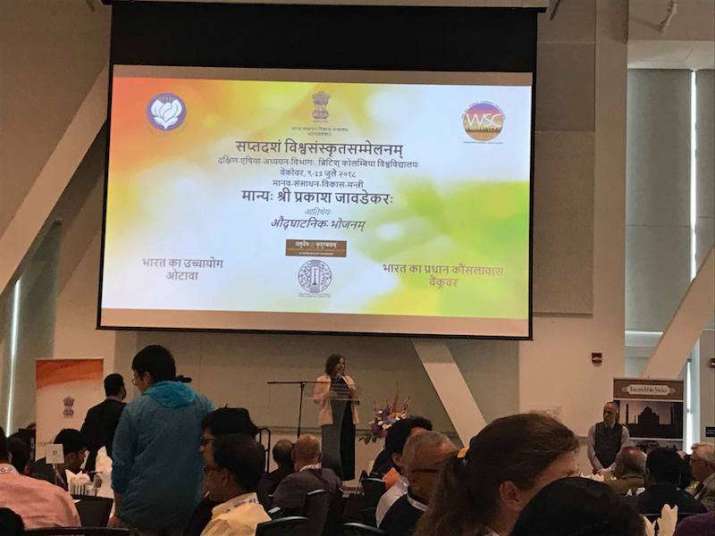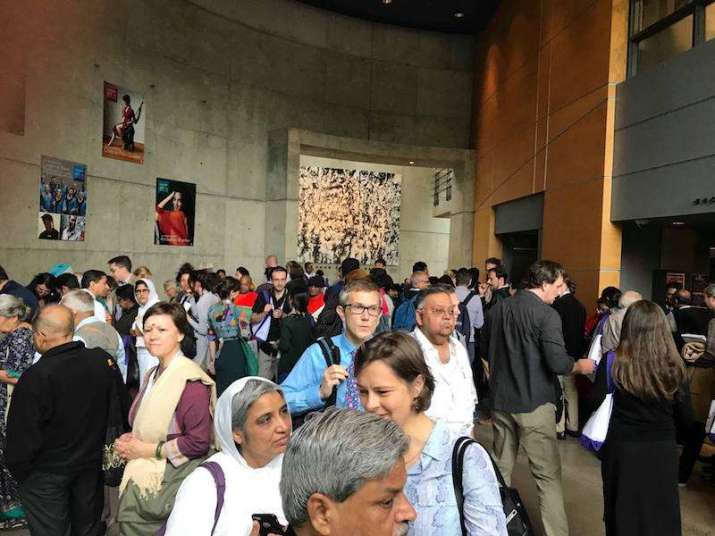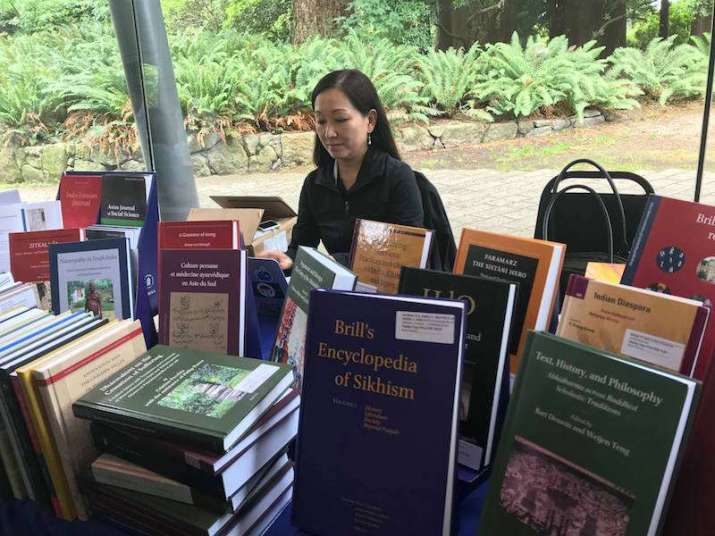FEATURES|THEMES|Exhibitions and Conferences
Reflections on the Buddhist Studies Section of the 17th World Sanskrit Conference
 Image courtesy of the author
Image courtesy of the authorThe 17th World Sanskrit Conference (WSC) was held at the University of British Columbia (UBC) on 9–13 July. Hosted by the Department of Asian Studies, the event was the first time that the triennial event has been held in Canada. It was organized by the International Association of Sanskrit Studies (IASS) and supported by organizations, including the Social Sciences and Humanities Research Council of Canada and International Buddhist Society.
The IASS was founded in 1972 after the first International Sanskrit Conference, which had been sponsored by the Indian government in collaboration with UNESCO. The primary purpose of the IASS is to organize the World Sanskrit Conference every three years. Each WSC aims to promote and preserve the Sanskrit language all over the world. Shri Prakash Javadekar, India’s minister of Human Resource Development, inaugurated this year’s conference.
The event provided an ideal platform for scholars to exchange research and knowledge by presenting papers on various disciplines related to Sanskrit. During the WSC, more than 500 international delegates presented papers on a range of topics related to the ancient language: from grammar, poetry, drama, and aesthetics to philosophy, the Vedas, epics, and Buddhist and Jain studies. There was a special panel on “Sanskrit Buddhist Manuscripts: Texts, Techniques, and Traditions,” divided into two sections that focused on research about the study of Buddhist manuscripts written in Sanskrit in terms of texts, techniques, and traditions.
In the first section of the special panel, organizer Charles DiSimone, Kazunobu Matsuda from Bukkyo University, Jowita Karmer from Ludwig Maximilian University of Munich, and Kazuo Kano from Komazawa University, respectively discussed: “The Hole Story: Techniques for Mula-sarvastivada Manuscript Production Used by a Scriptorium in Gilgit Around the 8th Century CE,” “On Leather Manuscript Fragments in the Schøyen Collection, Norway,” “Some Remarks on the Tattvartha Abhidharmakosatika,” and “Some Recent Findings of Sanskrit Manuscripts From Tibet and Ongoing Projects: Munimatalamkara, Amnayamaajara, and Others.”
In the second section of the special panel, David Fiordalis from Linfield College, Gergely Hidas from the British Museum, and Youngjin Lee from Geumgang University respectively discussed: “The Avadanasataka and the Kalpadrumavadanamala: Manuscript Traditions and Intertextual Questions,” “How to Enter the Residence of Nagas and Convert Them to the Buddha’s Teachings,” and “Verses in the Nidanaparivarta of the Dasabhumikasutra.”
 Image courtesy of the author
Image courtesy of the authorSanskrit is a vast subject and Buddhism is only one of many spiritual traditions in which it is a liturgical language. Therefore, the WSC had a Buddhist Studies section, a panel I shared with James B. Apple from the University of Calgary, Cristina Pecchia from the Austrian Academy of Sciences, and Vibha Aggarwal from Kurukshetra University. My paper was titled “A Linguistics Approach to the Use of the Terms Bhavanga and Bhavanga-citta in the Theory of Continuity of Personality,” and explored the use of the terms bhavanga (constituent-becoming) and bhavanga-citta (constituent-becoming of consciosuness) in the theory of continuty of personality.
In order to discover the doctrinal meaning of bhavanga, I followed a new interpretation of the term bhava as the “continuous persistence of ‘I.’” Evidence is available to demonstrate that the Buddha has described his liberation through the cessation of bhava, which signifies the holding “I” in the five aggregates. The Aaguttara Nikaya says that to achieve enlightenment, a person has to eradicate bhavagga, which is explained as the culmination point of personality (attabhava) in the commentary. In this context, my paper illustrated the understanding of bhavanga with two phenomena: in the acquisition of the vital continuum in the threefold bhava, and in the acquisition of notion of “I.”
The locus point of my argument was that bhava relates to the psychological features of desire, which form personality-belief (sakkaya-ditthi) regarding the body. As the personality belief drives on, it features jati (birth) as the successive contingency. And, finally, a person remains in the state of unsatisfactoriness, which is a dynamic characteristic of an individual’s continuation. As the process of self-continuity falls into unsatisfactoriness, the factor bhava functions as a part of an ongoing process that continually produces a complex psychological net of interdependency in the psycho-physical existence of an individual. I also presented the different ways in which discussions of consciousness and personhood have served as an area of academic study for a wider range of issues, including rebirth and continuity of consciousness until the attainment of Nirvana.
 Image courtesy of the author
Image courtesy of the authorThe Buddhist panel started with a presentation titled “The Stairway of Correct Conventional Reality: Significant Variant Readings in Candrakirti’s Madhyamakavatara (6.79)” by James B. Apple. The presentation covered a range of the seventh-century Indian Buddhist master Candrakirti’s influence upon Madhyamaka thought and practice in the history of Indian and Tibetan Buddhism, particularly through the Madhyamakavatara. The paper mostly discussed the philosophical implications focusing Candrakirti’s understanding of correct conventional reality. He concluded his presetation by providing a reading that offers the Madhyamika exegete an avenue for conventional practices to lead toward realizing ultimate reality.
The closing sessions of the conference consisted of a general assembly of the IASS, and an after-dinner talk by Gary Tubb of the University of Chicago. The 18th and 19th World Sanskrit conferences are scheduled to be held in the Canberra in 2021 and in Kathmandu in 2024.
See more
Conference Programme (The 17th World Sanskrit Confernece)
Nepal to host 19th World Sanskrit Conference (The Himalayan)
Kutiyattam, Sanskrit Theatre (UNESCO)














